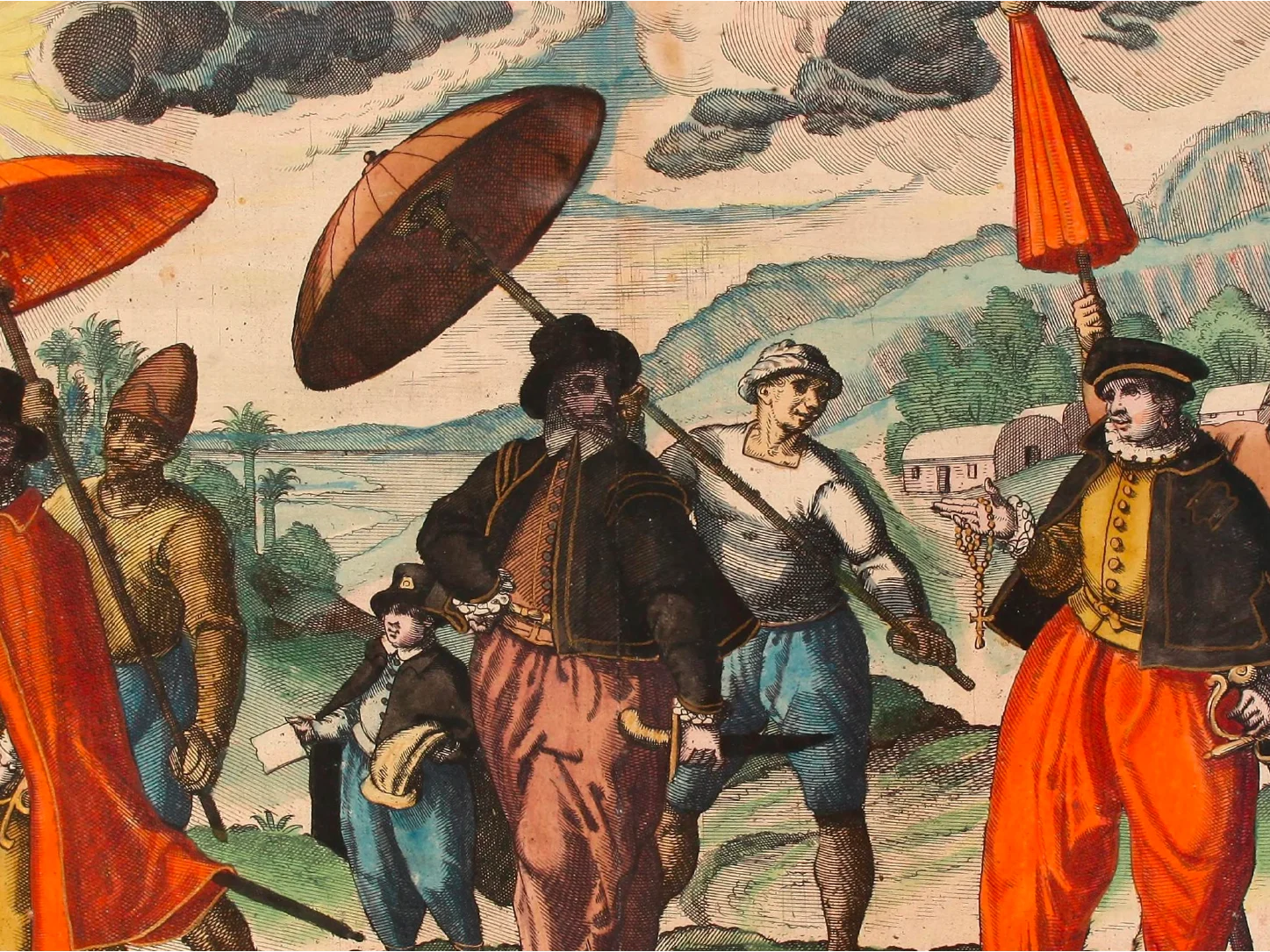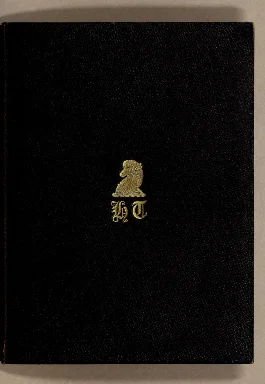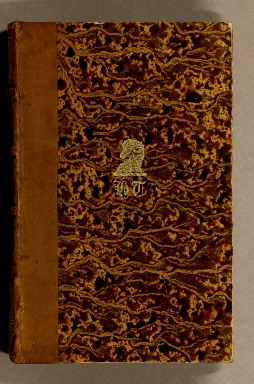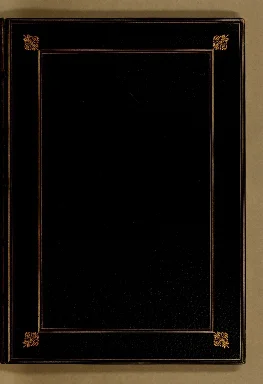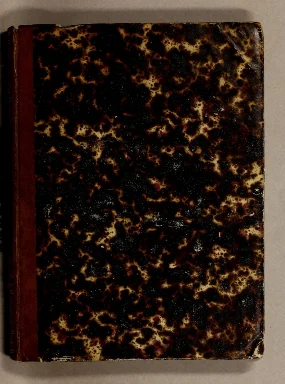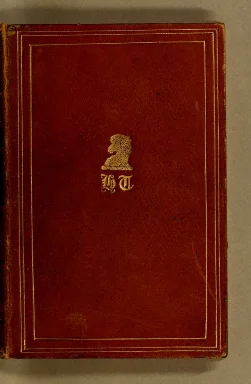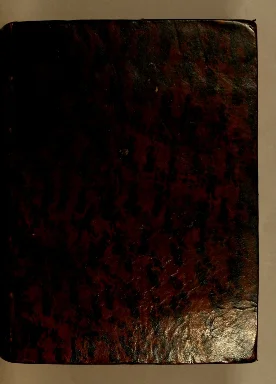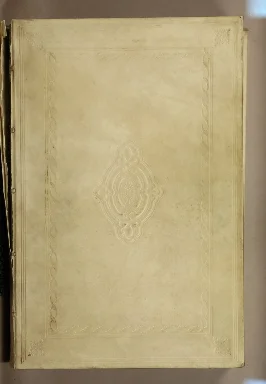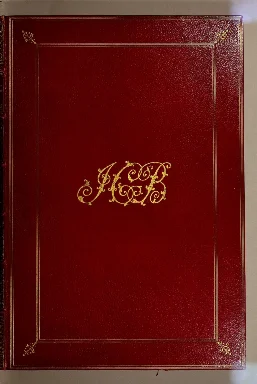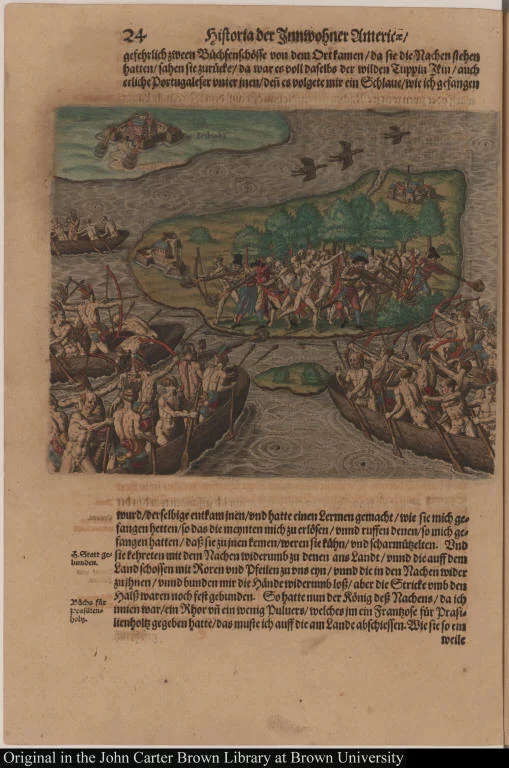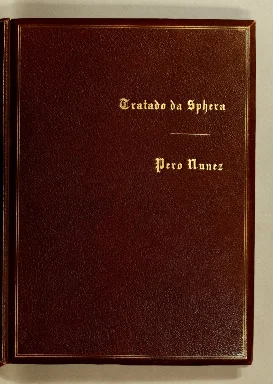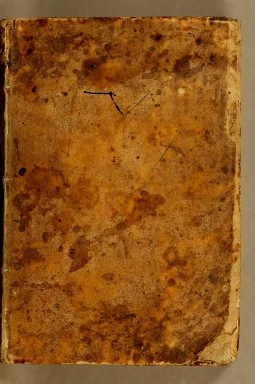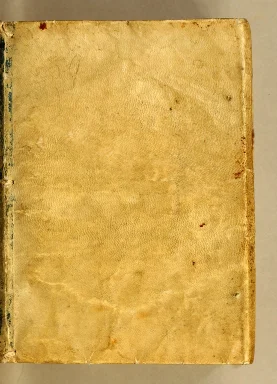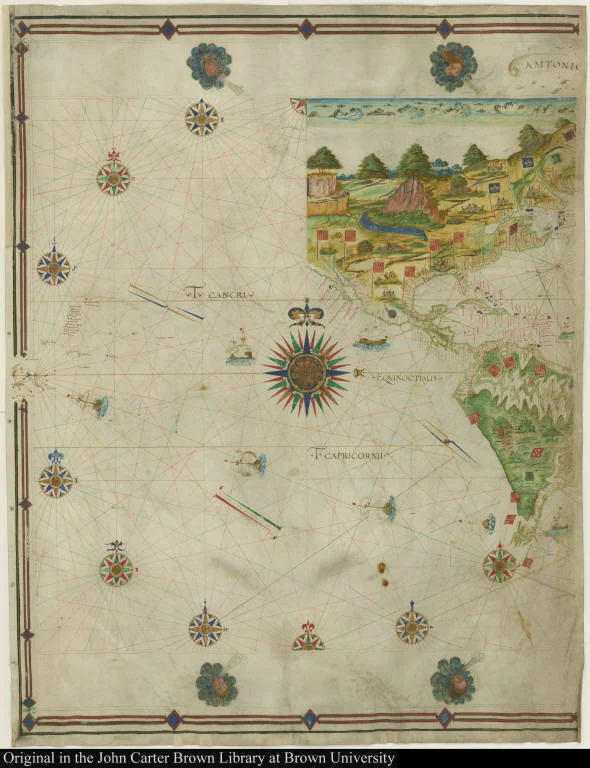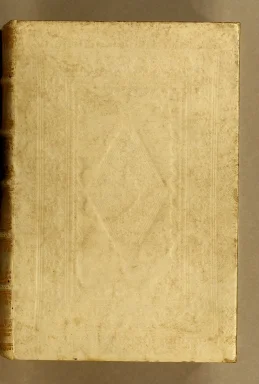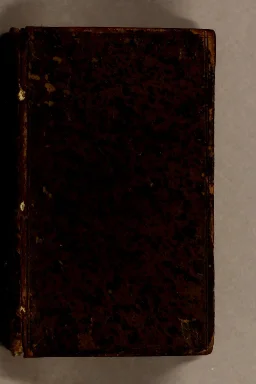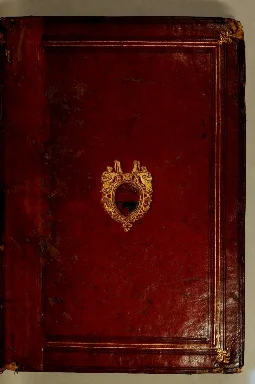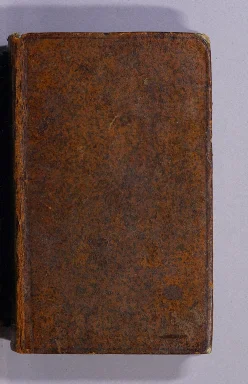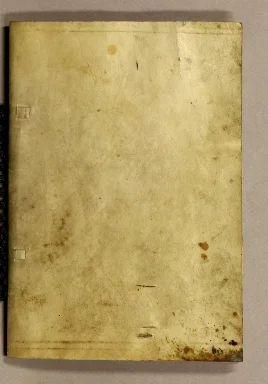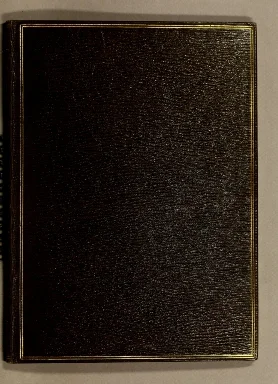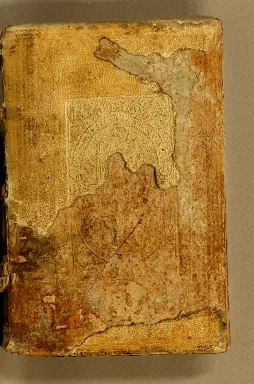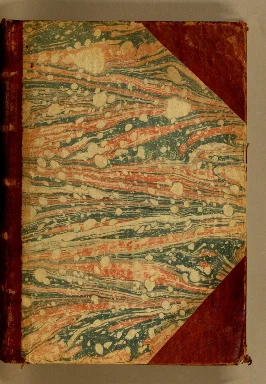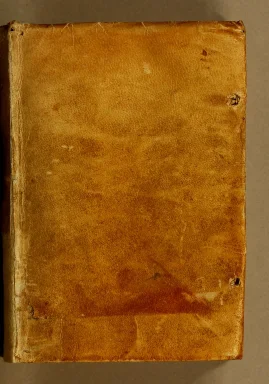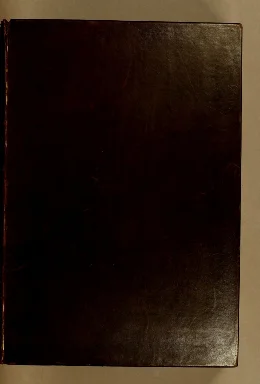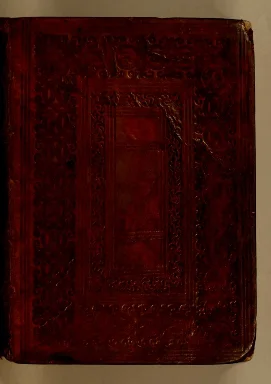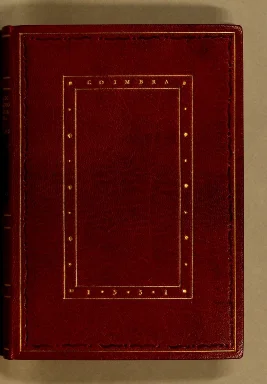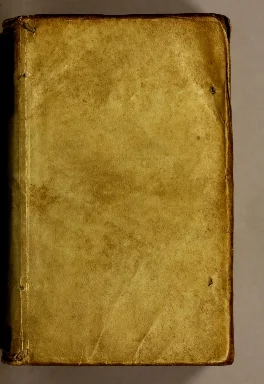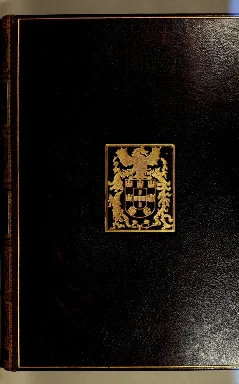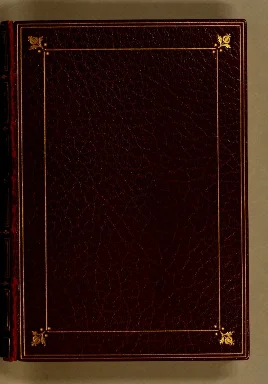1. Portuguese Overseas Travels and European Readers
Copia der newen Zeytung aus Presillg Landt
1514
-
 p. 9
p. 9This, the first text printed in German about Portuguese voyages to Brazil and the Rio de la Plata region, is supposed to have been written by an anonymous author on the island of Madeira who provided commercial information to the Fugger trade house in Germany. It was published in three editions in 1514 in the German cities of Augsburg and Nuremberg and was used in the following year by the geographer Johannes Schöner to write an explanation for his globe, Luculentissima quaedum terrae totius descriptio, where he indicated a passage to the East Indies in the south of Brazil. Published six years before Fernão Magalhães sailed from the Atlantic to the Pacific, the Copia der newen Zeytung was the only source to suggest the possibility of a passage from the Atlantic to the Pacific—that it would be easy to reach Malacca “by that way” and “in a short time.” MSL
Warachtige historie ende beschriuinge eens lants in America ghelegen, vv...
1558
-
 p. 155
p. 155Hans Staden was a German mercenary who managed to escape from the clutches of a so-called man-eating tribe in Brazil, the Tupinamba. His book was written and published in 1557 with the help of Johannes Dryander, a humanist and experienced scholar, and succeeded because it fed the public's curiosity concerning everything to do with the New World. The book is divided into two parts. The first is a report on Staden’s experiences and adventures; the second a careful description of the customs and traditions of the Tupinamba. This detailed and precise description of a previously unknown, strange, and dangerous people explains the book’s continued popularity throughout the sixteenth and seventeenth centuries. Even today it can be read as an important ethnographic source. Unlike many early book illustrations that often bore no relationship to the text, these were based on the author’s first-hand descriptions. Each new edition of the book added more illustrations, as in this one by the celebrated publishing house of Theodor de Bry in Frankfurt. MSL
Historia da prouincia sa[n]cta Cruz a qui vulgarme[n]te chamamos Brasil
1576
-
 p. 68
p. 68Pedro Magalhães Gândavo, born in the northern Portuguese city of Braga to a family of Flemish descent, wrote the first book printed in the Portuguese language about Brazil, História da Província de Santa Cruz. Gândavo was a well-known humanist and lived in Brazil for several years, attracted by the potential of the New World. His work is a eulogy of the fruitfulness and the beauties of the Brazilian landscape and should be read, according to some historians, as an invitation to emigrate from Portugal to Brazil. This history, written in 1573, along with his Tratado da Terra do Brasil (written in 1570, but unpublished for more than two centuries) are the first Portuguese texts on Brazil. Pero Magalhães Gândavo is rightly called the first historian of the “Holy Land of Santa Cruz.” MSL
Here the text relates how Baltasar Ferreira killed this marine monster off the coast of São Vicente (present-day Santos in the state of São Paulo) in 1564. The Indians of the area called it a water devil or hipupiára. Perhaps it was a walrus or sea-elephant.
Relaçam verdadeira dos trabalhos q[ue] ho gouernador do[m] Ferna[n]do d...
1557
-
 p. 9
p. 9The author of the Relaçam verdadeira has never been precisely identified. He was one of the Portuguese fidalgos (young men of good family) from Elvas who joined the Spanish expedition that crossed the southern territories of North America from Florida to the mouth of the Mississippi between 1539 and 1543. The leader of the expedition, Hernando de Soto, was a seasoned conquistador who had participated in the conquest of Peru and returned to Spain with unimaginable wealth. He was not so fortunate in his new venture; he died en route before the three hundred survivors of his initial force of seven hundred reached the Mississippi. Several accounts of the expedition were written, among them the anonymous “true relation” shown here. The author must have been one of the three surviving Portuguese who returned to Europe–Fernão Pegado, António Martins Segurado, or Estevão Pegado. The work describes in detail the wanderings of the expedition, including important ethnographic information about the Native Americans they encountered. The author also documents the devastating consequences of de Soto’s entrada for Indian demography and American ecology. This anonymous account was translated into English in London in 1609. RML
De beschryvinghe vant groot ende vermaert coninckrijck van Congo, ende d...
1596
-
 p. 1
p. 1Duarte Lopes was a Portuguese New-Christian merchant sent by the Catholic king of the Kongo, Dom Álvaro I, as his ambassador to the Pope in about 1578. After a long and tumultuous journey that took him a decade, Lopes arrived in Rome and had a fruitless audience with Pope Sixtus V. In Rome, he also met the Italian humanist Filippo Pigafetta, to whom he narrated in detail the history of the kingdom of the Kongo and the Portuguese presence there. Based on that meeting, Pigafetta wrote an illustrated book in Italian entitled Relatione del reame di Congo, first published in Rome in 1591. In the years to come, Pigafetta’s Relatione became a European best-seller, with countless translations and editions, many of them including additional engravings. JF
Die ritterliche vnnd lobwirdige Reyss, des gestrengen vnd vber all ander...
1548
-
 p. 5
p. 5A native of Bologna, Italy, Ludovico de Varthema left Venice in 1500 and, disguised as a Muslim merchant, traveled extensively in the eastern Mediterranean, the Red Sea, the Persian Gulf, and South India. Varthema then entered the service of the Portuguese, and was named Knight of the Order of Christ by Viceroy Dom Francisco de Almeida. The Bolognese traveler-adventurer returned to Europe via the Cape Route and Lisbon and, once back in Italy decided to put down on paper his experiences in Asia, although his claim to direct knowledge of regions east of Cape Comorin are doubtful. The Itinerario was written in 1509 and published in Rome the following year. Varthema’s work was well known by sixteenth-century Portuguese and became a very popular book throughout Europe, as successive translations in Latin, Spanish, Flemish, English, French, and German attest. This edition, printed in Frankfurt-au-Main in 1548, was the seventh German edition to be published since 1515. JF
Historia de las cosas de Etiopia
1557
-
 p. 1
p. 1The first Portuguese edition of Francisco Álvares’ Verdadeira informação das terras do Preste Joam came out in Lisbon in 1540, and soon became a European best-seller, with many translations and reprints. Álvares, who was born in Coimbra around 1470, was the chaplain of the first Portuguese embassy to Ethiopia led by Duarte Galvão. After a hazardous voyage, he remained in East Africa for six years, collecting materials that he would later use to produce a well-documented description of the Portuguese embassy and of the legendary, but quite bleak, land of the Christia monarch, Prester John. By coincidence, Álvares returned to Portugal in 1527 in the company of António Galvão, son of the recently deceased ambassador. In 1531 he journeyed to Rome to present an account of his expedition and its results to the Pope, and apparently died there around 1540. His manuscript circulated widely, but the first Lisbon edition seems to have been only an abridged version of the original.
Historiale description de l'Ethiopie
1558
-
 p. 1
p. 1The erudite scholar Giovanni Battista Ramusio included an Italian translation of Álvares’ treatise in the first edition of the first volume of his Navigationi et Viaggi, published in Venice in 1550. This was the main source for many other editions of Álvares’ travel account, printed throughout Europe, in Spanish, French, Italian, and German. RML
Tratado. Que compôs o nobre & notauel capitão Antonio Galuão,dos diue...
1563
-
 p. 5
p. 5António Galvão was the son of the celebrated Portuguese diplomat and chronicler Duarte Galvão. He was born ca. 1502-1503 and traveled twice to India in the royal service during the 1520s. In 1532 Galvão sailed once again to India, and from there traveled to the Moluccas in Eastern Indonesia where he held the post of captain of the Portuguese fortress of Ternate between 1536 and 1539. He returned to Portugal around 1540, and despite his outstanding career in the Estado da Índia, lived the next seventeen years as a destitute fidalgo in the Royal Hospital in Lisbon. On his death in 1557, Galvão left two manuscript treatises, one of which, the Tratado dos Descobrimentos, was first printed in Lisbon in 1563 by his friend, Francisco de Sousa Tavares. This work, based on a vast array of available manuscript and printed sources, presented for the first time a synthesis of Portuguese and Spanish accounts of discovery and exploration to the year 1550.
The discoueries of the world from their first originall vnto the yeere o...
1601
-
 p. 1
p. 1Richard Hakluyt published Galvão’s work in English as The discoveries of the world in London in 1601. RML
Peregrinaçam de Fernam Mendez Pinto
1614
-
 p. 5
p. 5Perhaps the most famous of all Portuguese travelers, Fernão Mendes Pinto was born in Montemor-o-Velho, around 1509. He sailed to India in 1537, in search of wealth and fame, as did many of his contemporaries. After a brief period in the service of the Estado da Índia, he traveled throughout maritime Asia for two decades, assuming different roles such as merchant, spy, mercenary, and ambassador. Jesuit documents place him around the South China Sea in the 1540s and 1550s, busy in commercial enterprises that more often than not turned into piratical expeditions. According to his own testimony, Mendes Pinto was among the first Portuguese to visit Japan in 1542 or 1543. Here he crossed paths with Father Francis Xavier, whom he met on the Japanese island of Kyushu in 1551. Four years later, while on his way to Japan again, he sent a letter from Macau, the first Portuguese "mail" to be sent from this soon-to-be-famous port. In 1558 Mendes Pinto returned to Portugal, where he became known as an expert in Oriental matters. It was rumored that he was writing a book of memoirs recounting his adventurous travels across Asia, but the Peregrinaçam was published in Lisbon only in 1614, many years after its author’s death in 1583.
The voyages and adventures, of Fernand Mendez Pinto, a Portugal: during ...
1653
-
 p. 1
p. 1The book became an immediate bestseller, not only because it was presented as a first-hand account, but also because of Mendes Pinto’s incredible adventures and exotic scenarios. His account (or selected portions of it) was repeatedly translated and published throughout Europe in Spanish, English, French, Dutch, and German. The accuracy of the Peregrinaçam has long been debated, mainly because Mendes Pinto seems to have blended his own experiences with that of many of his contemporaries. RML
Paesi nouamente retrouati. et Nouo Mondo da Alberico Vesputio Florentino...
1507
-
 p. 1
p. 1Fracanzio (the Latinized form of Francesco or Francescantonio) was born in the mid-fifteenth century in Montalboddo, now Ostra, in central Italy. He taught grammar, rhetoric, and geometry in Vicenza, and also in Padova, where he died around 1510. He was famous in European literary circles for the organization and publication of the collection of travel accounts known as Paesi nuovamente retrovati, which was published in Vicenza in 1507. For the first time in Europe, reports of Portuguese and Spanish voyages of discovery and exploration appeared in print, lifting the veil on Iberian overseas activities. Among other texts, Montalboddo included accounts of the explorations of Gaspar Corte Real in the northwestern Atlantic, of the 1498 Vasco da Gama expedition to India, of the voyage of Pedro Álvares Cabral to Brazil and India (1500), and of the Amerigo Vespucci letters on the New World, his Mundus Novus. Montalboddo’s work was repeatedly reissued in Italian, Latin, German, and French. Particularly significant was the Milan edition of 1508, translated into Latin by Arcangelo Madrignano, who stressed in his title the role of the Portuguese in the uncovering of the New Worlds. RML
Primo uoloume delle nauigationi et uiaggi nel qual si contiene la descri...
-
 p. 1
p. 1The Venetian civil servant Giovanni Battista Ramusio (1485-1557) began collecting travel reports in the early decades of the sixteenth century, using a vast network of informers and agents particularly active in Iberian overseas circles. In 1550 he published in Venice the first volume of the Navigationi et viaggi, a large collection of travel reports that became immediately renowned throughout Europe. In addition to the standard accounts, Ramusio’s collection included many previously unknown reports of geographical exploration in Africa, Asia, and the Americas, translated from Portuguese and Spanish sources. In the following years, the first volume was repeatedly reissued; the publication of two other volumes in 1556 and 1559, made the Navigationi the largest and most comprehensive European collection of travel literature in print. RML
Itinerario, voyage ofte schipvaert, van Ian Huygen van Linschoten naer O...
1596
-
 p. 81
p. 81The Dutch traveler Jan Huygen van Linschoten (1562-1611) lived in Goa on the west coast of India between 1583 and 1588, where he acted as secretary to the Portuguese archbishop Dom Vicente da Fonseca. After he returned to the Low Countries, in 1592 he collaborated with the Dutch scholar, Berent ten Broecke (also known as Bernardus Paludanus), to write a series of accounts of the Indies using his vast first-hand experience as well as a number of Iberian maps, books, and manuscripts he had collected during his travels. All of Linschoten’s works circulated widely and were repeatedly reissued and translated in Europe, but the most famous is the celebrated Itinerario, first published in 1596. It describes all of maritime Asia from Mozambique to Japan and is illustrated by three maps and thirty-six colored engravings made from original drawings by Linschoten. The one shown here, depicting the rua direita of Goa, is one of the most interesting and well-known engravings of the series. RML
Americae tertia pars Memorabile[m] provinciae Brasiliae historiam contin...
1592
-
 p. 41
p. 41A Tupinamba settlement in Brazil according to the account of Hans Staden.
[How the savages, having captured me, fought our people who attempted to...
1492-1600
-
 p. 1
p. 1["The most known part of America"]
2. Geographies of Knowledge: European Cultural Networks and Portuguese Intellectuals
Tratado del esphera y del arte del marear
1535
-
 p. 1
p. 1The Portuguese pilot Francisco Faleiro, who for many years served the Spanish crown, wrote one of the earliest books on the arte de marear (“the art of seamanship”). This type of book contained the essential knowledge needed for oceanic sailing–a brief theoretical description of the basic concepts of cosmography and astronomy, usually along the lines of Sacrobosco’s Treatise on the Sphere, followed by a description of the procedures, techniques, and instruments used at sea. Faleiro’s book was especially noteworthy for its clarity and for the fact that it introduced novel techniques and instruments. Sixteenth and early seventeenth century Iberian authors published their influential texts on the art of seamanship closely following the structure proposed by Faleiro in this work. HL
Tratado da sphera
1537
-
 p. 7
p. 7The Portuguese pilot Francisco Faleiro, who for many years served the Spanish crown, wrote one of the earliest books on the arte de marear (“the art of seamanship”). This type of book contained the essential knowledge needed for oceanic sailing–a brief theoretical description of the basic concepts of cosmography and astronomy, usually along the lines of Sacrobosco’s Treatise on the Sphere, followed by a description of the procedures, techniques, and instruments used at sea. Faleiro’s book was especially noteworthy for its clarity and for the fact that it introduced novel techniques and instruments. Sixteenth and early seventeenth century Iberian authors published their influential texts on the art of seamanship closely following the structure proposed by Faleiro in this work. HL
De nauigatione libri tres
1549
-
 p. 3
p. 3Diogo de Sá’s De navigatione is an attack on Pedro Nunes’ works and ideas on navigation. Sá combined a strong scholarly background with extensive practical experience at sea, something that Nunes lacked. Based on this combination of skills he mounted a violent critique, not only of Nunes’ mathematical ideas, but against mathematics in general. The book is written as a dialogue between a philosopher and a mathematician in which the first repeatedly exposes the limitations and superficiality of the mathematics of the second. De navigatione is an interesting testimony to the reaction against the mathematical study of nature, but it does not seem to have caused much impact. Nunes never replied to the attacks and the arguments of Diogo de Sá were soon forgotten. HL
Arte pratica de navegar e regimento de pilotos
1681
-
 p. 141
p. 141Luís Serrão Pimentel (1613-1679) is one of the key figures of seventeenth-century science in Portugal. He succeeded António de Mariz Carneiro as cosmógrafo-mor (chief-cosmographer) of the kingdom in 1641, the same function exerted by the celebrated Pedro Nunes between 1529 and 1578. The cosmógrafo-mor was responsible for examining and certifying all those seeking to prepare maritime charts and nautical tools. Serrão Pimentel was also appointed chief engineer of Portugal and taught mathematics, navigation, and military fortification in the aula da matemática founded in Lisbon, 1647. Besides the Arte pratica de navegar, he authored many other books, such as Methodo lusitanico de desenhar as fortificaçoens das praças (Lisbon, 1680). His son Manuel Pimentel (1650-1719) was to follow in his footsteps as cosmógrafo-mor and author of works on the art of seamanship, such as the Arte de navegar (Lisbon, 1699). JF
Infante D. Pedro. Livro do infante D. Pedro de Portugal
1644
-
 p. 5
p. 5This short but influential book by the otherwise unknown Spanish writer Gómez de Santisteban displays a strange mixture of fact, myth, and pure fantasy. As prince and later as Regent of Portugal (1439-1446), Dom Pedro orchestrated the earliest phases of Portuguese maritime expansion. In addition, he gained fame for his extensive travels across Europe, where he received a hero’s welcome from England to Hungary.
Dom Pedro established diplomatic contacts with the great centers of international commerce, obtaining information on international trade, communication, and naval construction in such cities as London, Bruges, Florence, Rome, and especially Venice.
The literary genius of Gómez de Santisteban was to combine Dom Pedro’s already celebrated travels (as well as a rumored trip to the Holy Land) with the fervent desire of Europeans at the beginning of the sixteenth century to connect with the legendary Christian communities of Prester John in Ethiopia and the followers of St. Thomas the Apostle near his tomb in Meliapor, India. Only one copy of the first Spanish edition of 1515 and the first Portuguese translation of 1602 are known. This second Portuguese edition is likewise rare. MP
[Early representation of Newfoundland, Lower California, the Amazon, and...
1545
-
 p. 1
p. 1This map is one of the earliest to show the results of Spanish exploration of North and South America. Francisco de Orellana's expedition of 1539 to 1542 is shown in South America. Orellana began his voyage at Quito, traveled across the Andes to the headwaters of the Amazon, and was the first European to make the descent of the Amazon River. He named the river after the Amazons of Greek myth after he and his men encountered a tribe of women warriors.
This map has been attributed to António Pereira, a Portuguese seaman, and was originally in three parts (the other two parts have not been found).
Chorographia de alguns lugares que stam em hum caminho
1561
-
 p. 7
p. 7In 1546 the Cardinal Infante Dom Henrique sent Gaspar Barreiros, a cleric and humanist, on an embassy to Rome to give thanks to the Pope for Dom Henrique’s recent elevation to cardinal. At the request of his uncle, the historian João de Barros, Barreiros recorded his travels from Spain to Italy.
The resulting Chorographia is rich in personal experience and acute observation of the places, buildings, and peoples he encountered. Writing as a learned geographer and antiquary, Barreiros also included a healthy dose of erudition and criticism–he distrusted books, valuing knowledge gained from direct observation and experience instead. Although admitting that numerous Greek and Roman authors had written about the same places he had, Barreiros asserted that a new description was necessary because things continually change. MP
Casparis Varrerii Lusitani Commentarius de Ophyra regione, in sacris lit...
1616
-
 p. 1
p. 1Gaspar Barreiros’s suspicion of texts and his challenges to traditional scholarship earned him an international reputation as a detector of misconceptions and forgeries. In his Latin text, De Ophyra regione, Barreiros demolished the prevailing idea that the Biblical region of Ophir, from which Solomon had obtained great quantities of gold, was actually located in Peru. Originally published as part of the Chorographia, this essay was subsequently printed separately, as in the edition shown here from Rotterdam. It was also included as part of numerous books on New World subjects. MP
Hispania
1542
-
 p. 1
p. 1Góis quickly penned this short polemical treatise in Latin in response to the offensive remarks the German humanist Sebastian Münster made about Iberia in his 1540 edition of Ptolemy’s Geographia Universalis. Góis tried to prove the power, greatness, and glory of Iberia by compiling lengthy lists of facts and figures. His triumphant section on military heroes includes Dom Francisco de Almeida and Dom Afonso de Albuquerque, the first two governors of the Portuguese Estado da Índia, while the conquistadors Fernando Cortes and Francisco Pizarro represent the conquests made in the New World for Castile.
The second half of this patriotic defense directly confronts Münster’s accusations with varying degrees of precision and success. Góis proudly defends the economic and agricultural vitality of Iberia, as evidenced by the variety of exotic goods from Asia, Africa, and the Americas that arrived daily at the ports of Lisbon and Seville. But for Góis, the ultimate proof of the prosperity and magnificence of Iberia was the presence of several elephants and a rhinoceros at the Portuguese royal court. MP
Mores, leges, et ritus omnium gentium
1561
-
 p. 7
p. 7The present edition of Joannes Boemus’s (c. 1485-1535) Omnium gentium mores leges et ritus ex multis clarissimis rerum scriptoribus (first published in Augsburg, 1520) is one of the many sixteenth-century printed books to include Fides, Religio Moresque AEthiopum. Originally published in Louvain in 1540, this Latin book reflects the meeting between its author, Damião de Góis, and Saga Za’ab («Zagazabo»), the Ethiopian ruler Lebna Dengel's ambassador to Portugal.
Góis echoes Saga Za’ab’s detailed statement about the nature and practice of the Christian religion in his country, which was viewed with growing suspicion in Lisbon, and in Rome. In the years of the Counter-Reformation, Fides, Religio Moresque AEthiopum was to face both censorship and public refutation, but it stands as one of the major writings of the Portuguese humanist Damião de Góis, as well as an important piece of the intellectual history of sixteenth-century Europe. JF
Deliciae Lusitano-Hispanicae
1613
-
 p. 1
p. 1Using a wide range of sources such as ancient Roman inscriptions and medieval Arabic chronicles, and employing an innovative variety of historical methods, such as archaeology and etymology, the antiquary, humanist and neo-Latin poet André de Resende (1498-1573) set out to persuade his fellow countrymen and other Europeans of the falsehood of the idea that in Iberia “Hispani omnes sumus” (xxxxxx) and to prove wrongly, as it turned out, that ancient Roman Lusitania was identical with modern Portugal.
Resende patriotically distorted his evidence to reveal the supposed Lusitanian origins of Portugal and the Portuguese people. He claimed the ancient figures of Viriato and Sertorius as national heroes and maintained that contemporary Portuguese had inherited the noble, valorous character and heroic traditions of the Lusitanians. He stressed their courage, their undying adherence to the cause of independence, and their resistance against the foreign Roman invader. Resende was determined to demonstrate that Portugal possessed a distinct identity as an independent nation of people distinguished by heroic valor. MP
De rebus, Emmanuelis regis Lusitaniae inuictissimi virtute et auspicio g...
1571
-
 p. 5
p. 5As a leading humanist and influential member of the ecclesiastical hierarchy, Osório was commissioned by the Cardinal Infante D. Henrique to compose in Latin a history of his father’s reign in order to make the astounding achievements of the Portuguese and the inestimable glory of King Manuel better known throughout the leading intellectual circles of Europe. The resulting publication was an enormous success.
Hieronymi Osorii Lusitani, Siluensis in Algarbiis episcopi; De rebus; Em...
1574
-
 p. 1
p. 1Several editions were issued in quick succession in Germany and the Latin text was swiftly translated into English and French. Montaigne vigorously endorsed Osório as “le meilleur historien de nos siècles.” MP
Aromatum, et simplicium aliquot medicamentorum apud Indos Nascentium historia
1567
-
 p. 78
p. 78This is the first edition of the Latin translation of Portuguese physician Garcia da Orta’s masterwork, Colóquios dos simples e drogas he cousas medicinais da Índia (1563). Orta was professionally active in Portuguese Asia for over three decades (1534-1568). By interacting with Hindu and Muslim medical practitioners in India, Orta learned detailed information about indigenous healing practices and the application of local medicinal plants, which he codified and published in the Colóquios. The original text, printed at the Rachol Seminary in Goa, India, was the second European book published in Asia. As the first textbook on tropical medicine and Indian materia medica written by a European, this work would transform the Western understanding of and appreciation for Asian medicine. Publication of Garcia da Orta’s text excited great interest among Europe’s educated elite.
The edition on display is an unauthorized (and incomplete) Latin translation by the prominent French botanist and physician Carolus Clusius (Charles Lécluse, 1526-1609). Clusius modified and augmented Orta’s text, adding substantial new material relating to plants of the Americas.
Dell' historia de i semplici aromati, et altre cose; che vengono portate...
1589
-
 p. 1
p. 1Editions of Orta’s work soon appeared in English, French, and Italian, as well, pirated from Clusius’s abridged Latin text. The Venice, 1589, edition displayed here is a re-issue of an unauthorized translation, first published in Venice thirteen years earlier. TW
Tractado delas drogas, y medicinas de las Indias Orientales
1578
-
 p. 1
p. 1This is the first edition of an influential, illustrated Spanish-language botanical text by the Portuguese physician Cristóvão da Costa (c. 1515-1594). Costa was a Jesuit missionary, a naturalist, and a physician who had first traveled to the Estado da Índia as a soldier. He returned to Europe for medical training, but again served in India from 1568 to 1572, first in Goa as physician to the Portuguese viceroy and then in the royal hospital of Cochin. Cristovão da Costa followed Garcia da Orta’s model, simply adapting much of the original text of the Colóquios. Costa’s systematic plant descriptions, however, improved the detail and accuracy of the earlier text. Further, where Orta’s original text was un-illustrated, Costa’s work is notable for its forty-seven (mostly) full-page plates, created as woodcuts based on the author’s own highly accurate drawings of Asian plants. Costa also included important new information about plants from the West Indies. TW
Traicté de Christophle de la Coste medecin et chirurgien. des drogues &...
1602
-
 p. 1
p. 1Though it bears Cristovão da Costa’s name, this is actually a French translation of Carolus Clusius’ Aromatum (Antwerp, 1567), itself a translation of Portuguese physician Garcia da Orta’s Colóquios. This translation was completed by Antoine Colin, “Master Apothecary of the City of Lyon,” who in the early seventeenth century translated and published several seminal materia medica treatises from the newly explored regions outside Europe. The publisher, Jean Pillehotte, was the designated printer for the Society of Jesus for the city of Lyons and its environs. His print shop published an abundance of influential scientific and ecclesiastical texts in the late sixteenth and early seventeenth centuries. Jesuit interest in medical texts derived from the healing institutions they operated in connection with their missionary activities in India, China, and the Americas. TW
3. Imperial Portugal and European Printing: Propaganda, Epics and the Writing of History
Ad Alexandru[m] vi Pont. Max. Ferd: de Almeida electi Eccl[es]i[a]e Sept...
1493
-
 p. 1
p. 1Alexander VI succeeded Innocent VII as Pope in 1492, and the text of Lucena's oration of obedience was reprinted in Rome for the occasion. King João II decided to send Dom Fernando de Almeida to Rome in order to deliver a Latin oration to the newly elected Pope as well. It was a tense moment, however. Columbus had just returned from his first voyage, the newly elected Pope, Alexander VI, was Spanish, and the papal bull Inter caetera (1493) recognized the Catholic king's extensive claims to New World territory. The text presented in Rome by Almeida in 1493, shown here, is regarded as a political response to this difficult situation and a prelude to the Treaty of Tordesillas, signed between Portugal and Spain in 1494. JF
Valasci Ferdinandi vtriusq[ue] iuris consulti illustrissimi regis Portug...
1485
-
 p. 1
p. 1King João II (r. 1481-1495) viewed the election of a new Pope in 1485 as the perfect opportunity to inform Europe about Portuguese overseas achievements. As a result, the Andalucian Vasco Fernandes de Lucena was chosen to travel to Rome and deliver a Latin oration of obedience to Innocent VIII. This oration, which was also intended to impress the cardinals of the Consistory as well as the ambassadors of different European monarchs, was printed that same year in Rome. Lucena's oration recalled the Crown’s services to Christianity against Islam, but the most interesting section of the text relates to the Portuguese exploration of West Africa. Here, the King of Portugal, now titled “Lord of Guinea,” announces that navigation between the Atlantic Ocean and the Indian Ocean was possible and that the Portuguese were very close to entering the “Arabic Gulf.” JF
Serenissimi Emanuelis Portugallie Regis ad Julium. ii. Pont. Max. Episto...
1508
-
 p. 1
p. 1King Manuel I (r. 1495-1521) followed and enhanced his predecessor’s strategy of informing Europe, via the Pope and Rome, about Portuguese overseas achievements. In the Epistola serenissimi (September 25, 1507), Dom Manuel had announced to the world the “conquest” of the mythical Tapobrane (Ceylon) from the “Saracens.” Pope Julius II was impressed and thought of bestowing a title on the Portuguese king in the manner of the Spanish, “Catholic,” and the French, “Most Christian,” monarchs. The lettershown here is another example of Manueline propaganda. It focuses upon East Africa (where Muslim rulers were becoming Portuguese tributaries), the Red Sea (especially the island of Soqotra, which was populated by thousands of Christians), and the important Persian Gulf port of Hormuz. JF
Epistola potentissimi ac inuictissimi Emanuelis regis Portugalie et Alga...
1513
-
 p. 1
p. 1In this letter dated June 1513, King Manuel informs the newly elected Pope Leo X about the conquest of Malacca (identified with the legendary Aurea Chersonesum) by Governor Afonso de Albuquerque in July, 1511. The original letter was written in Portuguese, but it was not long before it was translated into Latin and became a “best-seller.” Twenty-four Latin editions were published in six different European cities during the sixteenth century, along with versions in Italian, German, Dutch, and French. In the letter, Malacca is presented as a heavily populated, extraordinarily rich city, a cosmopolitan gateway linked to the main trading centers of Asia and home to affluent merchants from far and wide. JF
Von der neü gefunden Region so wol ein Welt genempt mag werden, durch d...
1505
-
 p. 3
p. 3In his Mundus Novus, Amérigo Vespucci first announced in print that the newly discovered lands formed a previously unknown continent. Addressed to Lorenzo di Pier Francesco de Medici, Vespucci's report on the New World, namely Brazil, provided both novelty and entertainment for contemporary readers, as the fifty editions of this letter prove. The German title communicates the most important message—About the new region that might be called a New World, marvellously discovered by the Christian King of Portugal.
The cavalier shown in this Basel edition of 1505 can easily be identified with Dom Manuel I, King of Portugal. Dressed in armour and holding a heraldic shield, the king personifies not only the ideals of chivalry, but also leadership of the European Christian community and organizer of overseas discoveries. MSL
Gesta proxime p[er] Portugalen[ses] in India. Ethiopia [et] alijs orie[n...
1507
-
 p. 9
p. 9The news about the discovery of a sea-route to India was received with great enthusiasm in Europe. Among the numerous contemporary pamphlets published on the subject, the letters written by King Manuel, especially this letter addressed to the influential Cardinal Dom Jorge da Costa, were widely disseminated across Europe. The Portuguese king describes Calicut as the main trading point in India for spices, amber, musk, pearls, rubies, and many other rarities. He also announced the discovery of Taprobane: "The isle of Taprobana that is called Ceylon, is situated at about more or less 150 miles from Calecute and it takes three days by ship to reach it from the mainland."
This news heralded an important change in European patterns of trade, and the Portuguese overseas enterprise would soon exercise a strong influence as it was realized that the sea-route to India opened new areas of commerce that could not be neglected. There was a great deal of interest in the Portuguese discoveries in several German cities, as this pamphlet published in Nüremberg in 1507 demonstrates. MSL
Epitome rerum gestarum in India a Lusitanis, anno superiori
1531
-
 p. 1
p. 1André de Resende was born in Évora around 1493. After studying at the Spanish universities of Alcala de Henares and Salamanca, he traveled throughout Europe and established contacts with many renowned humanists. He settled at Louvain from 1528 to 1531, where he published his Epitome, the first work in Latin dedicated to Portuguese overseas expansion. Since 1529, when Suleyman II laid siege to Vienna, the Ottoman Turks had been seen throughout Europe as a strong menace to Christianity. Nuno da Cunha, governor of the Portuguese Estado da Índia, had recently sent an expedition to the Red Sea against this threat and André de Resende was asked to write an account of this military operation. Resende somehow acquired a copy of news reports sent from India to Lisbon, and from Lisbon to the Portuguese factory in Antwerp, and translated them into cultivated Latin. This Louvain edition circulated widely and another edition was published that same year in Cologne, Germany. RML
Comentario do cerco de Goa e Chaul, no anno de M.D.LXX. visorey dom Luis...
1573
-
 p. 5
p. 5This work is an interesting example of the so-called “siege literature” of the Portuguese empire, exemplified by Diogo de Teive’s earlier Commentarius de Rebus in India apud Dium, (Coimbra, 1548). The author of the Comentario shown here is the jurist António de Castilho (d. 1596?), who focused on the Portuguese military deeds and ultimate victory in the simultaneous sieges in 1570 of Goa and Chaul, planned by the sultans of Bijapur and Ahmadnagar. Perhaps referring to Castilho’s Comentario, King Sebastian (r. 1557-1578, in a letter addressed to the city of Goa dated March 1573, states that he has ordered the history of the sieges to be written, “so that it could be printed and publicized all over the world.” JF
Chronica dos valerosos e insignes feitos del rey don Ioão II. de glorio...
1622
-
 p. 5
p. 5In his Chronicle of João II, the” Perfect Prince,” the courtier, poet, and chronicler, Garcia de Resende presents the first literary and psychological portrait of a Portuguese king. Instead of writing a traditional history of the reign, Resende, a writer of enormous literary skill, offers an admiring, intimate description of the man and the monarch. The Chronicle is especially valuable as a microhistory of court society observed and criticized from the inside. As a close, personal, life-long friend of João II, Resende endeavored to celebrate and honor the memory of the king while also investigating the themes of the changing values, mentalities, and material culture in Portugal initiated by exploration and expansion. This edition was heavily edited by censors sensitive to the author's numerous derogatory statements about Spain. Those passages were typically rewritten to provide a positive reading completely at odds with the Resende’s original purpose and meaning. MP
Dialogos de varia historia
1594
-
 p. 517
p. 517Mariz dedicated his life to books. He gained early experience in typography by working with his father, António de Mariz, who was publisher to the prestigious University of Coimbra. Pedro de Mariz received his degree from there as well, and secured a prominent post at the university’s outstanding library. He developed an interest in poetry and history but was particularly fascinated by personal narratives and biography. His colorful, biographical conception of history was expressed to magnificent effect in his major work, appropriately titled, Diálogos de vária história, published by his father. It is the first book in Portugal to include engraved copperplate portraits to accompany the lives of rulers. MP
Chronica do felicissimo rei Dom Emanuel
1566-1567
-
 p. 7
p. 7Raised at the court of Manuel I, Góis spent over twenty years in northern Europe and Italy in service to the crown. He returned to Portugal to direct the national archives, a position that gave him privileged access to documents he needed to write his chronicle of the reign of Manuel I. Although Góis preferred to use official papers, eye-witness testimony, or his own first-hand observation, he relied extensively on the chronicles of Barros and Castanheda for information on events in Africa and Asia. Indeed, this is the first chronicle of a Portuguese king that explicitly constructs the history of a reign around the dominant themes of overseas expansion and conquest.
The author's strict adherence to chronology means that the narrative sometimes lacks focus and moves confusingly back and forth across vast geographical areas, addressing events rather than the specific achievements or careers of individuals. Thus, the figure of the king becomes secondary to the glorious and honorable feats realized by others during his reign. Góis was criticized for his wholly secular conception and elaboration of history and for his rigorous standards of distributing praise and blame based on merit alone, a practice that won him powerful enemies who felt the chronicle should have been a vehicle for flattery and adulation. MP
Commentarios do grande Afonso Dalboquerque
1576
-
 p. 5
p. 5Brás de Albuquerque, the son of Afonso de Albuquerque, set out to glorify his father’s career as governor of India (1509-15), hoping to restore his reputation as a great Portuguese hero responsible for the creation of the Estado da Índia through the construction of key fortresses, the conquest of strategic ports, and his inspired, high-level diplomacy. The son felt that his father’s brilliance had not been adequately emphasized in the chronicles of Barros, Castanheda, and Góis, and his response was the Commentarios, a lengthy, coherent narrative based on his father’s correspondence with King Manuel I. It is the earliest use of letters as a historical source in Portuguese historiography and Brás radically transformed this mass of material into a heroic biography, providing both a detailed record and an interpretation of Afonso’s career. Brás modeled the form and content of his work on accounts of Julius Caesar's reign. As a leader, general, strategist, and writer, Afonso was portrayed as a "Christian Caesar" or as the "Caesar of the East."
The Commentaries were first published in 1557. This second edition of 1576 represents a complete rewriting of the text with Bras's single-minded focus on establishing his father’s greatness, best indicated by the change in title that adds the simple epithet, “do grande,” implying that his heroic stature was innate. MP
The life of Dom John de Castro, the fourth vice-roy of India
1664
-
 p. 1
p. 1Dom João de Castro (1500-1548), governor and fourth viceroy of India, was celebrated as the great military leader of Portugal who led the Estado da Índia to the apex of its power. His improbable victory over monsoon winds and Muslim forces at the second siege of Diu (1546) was championed by the crown in numerous official publications in Latin, Italian, and French. Contributing to this infectious, enduring cult of personality, Jacinto Freire de Andrada (1597-1657) published a biography in 1651. This was translated into English in 1664 by Peter Wyche, a testimony to the international fascination surrounding this remarkable figure. MP
Historia do descobrimento & conquista da India pelos Portugueses
1551
-
 p. 5
p. 5Fernão Lopes de Castanheda’s History of the Portuguese Discovery and Conquest of India ranks among the most important chronicles of early Portuguese expansion in Asia. The author (d. 1559) left his country as a young man in 1528 to serve as a scribe in Goa. After returning to Portugal in 1538, he became an administrative officer at the University of Coimbra, where he remained until his death. Making use of his rich personal experience and of knowledge gathered from documents and eye-witness accounts from Goa, Castanheda set out to write a chronicle of the Portuguese deeds in Asia beginning with the voyage of Vasco da Gama. His work, divided into ten books covering roughly five years each, is less marked by humanistic conventions than other works of the day, although Castanheda does cite classical authors, and his ethno-geographical descriptions are generally more vivid, though less polished, than those in Barros’ Asia. The first book of the Historia, dealing with events from 1497 to 1504, was printed in Coimbra in 1551. Only a few copies of this edition survive, and a corrected version was issued in 1554.
Histoire de Portugal
1581
-
 p. 5
p. 5Castanheda’s Historia was among the most widely circulated and translated Portuguese chronicles. The French adaptation shown here, prepared by Simon Goulart and printed in Paris in 1581, includes a translation of Jerónimo Osorio’s De Rebus Emmanuelis Gestis (1571). There were also Castilian, German, and English translations of Castanheda in the sixteenth century. ZB
Asia
1552-1553
-
 p. 7
p. 7João de Barros (c.1496-1570), court Humanist and chief administrator of the Casa da Índia at Lisbon, wrote a number of successful works including a chivalric romance, Clarimundo, and several treatises on Portuguese grammar, morals, and related subjects. His magnum opus, Da Ásia, is generally referred to as Décadas da Ásia, because it follows the structure of Livy’s Decades of the Roman Empire. Barros was one of the first Europeans to develop an interest in Asian history and geography, and in his writing he made use of a wide array of sources he had gathered together in his office, as he never traveled abroad. These included books purchased in the East by agents of the Portuguese crown—Arabic and Persian chronicles, Chinese geographical works, and Indian palm leaf manuscripts. Although Barros's annotated copy of Ptolemy's Geografia has been lost, a number of his elaborate ethno-geographic descriptions survive in Ásia. In contrast with Castanheda, Barros styled himself as a "cabinet author" who based his knowledge on a critical appreciation of the sources, rather than on personal experience. The first two Decades, dealing with the Portuguese expansion up to 1515, were printed in Lisbon in 1552-1553, shortly after Lopes de Castanheda started publishing his rival History. The third Decade came out in 1563, and a fourth, posthumous, volume saw the light in Madrid in 1615. The first two Decades were translated into Italian by Alonso de Ulloa and printed in Venice in 1562. To this day, there is still no English translation of Barros’s work. ZB
Os Lusiadas de Luis de Camões
1572
-
 p. 5
p. 5The Lusiads is one of the great books of Western literature and the most famous literary work in the Portuguese language. This epic poem in ten cantos combines history, current events, mythology, and imagination. The story, written while Camões was serving in Portuguese India as a soldier from 1553-1570, recalls Vasco da Gama’s 1497-1499 voyage to India with flashbacks, narrative, a long speech recounting the history of Portugal, interventions of classical gods, dreams, prophesies, and erotic visions. Approximately forty copies of the first edition exist today and the copy shown here is one of the first to be printed, having the pelican at the top of the page facing the reader’s right. (For lovers of bibliography, this is the so-called "E" edition, similar to copies at the Hispanic Society of America and Yale University. However, it is unlike the “E” copies at Harvard and University of Texas at Austin, which have the corrected “CANTO SEGUNDO” on folio 23. The copies with the uncorrected “CANTO PRIMEIRO,” such as this JCB copy, are now thought to be among the first copies printed.) KDJ
The Lusiad, or Portugals historicall poem
1655
-
 p. 1
p. 1Camões lost an eye to a splinter during the period from 1546 to 1549 when he fought in the campaign in Africa.
The first English translation of “Lewis Camoen's” Lusiad was done by Richard Fanshaw (1608-1666) who was educated at Cambridge and appointed English ambassador to Portugal and then Spain. Another English translation would not be done for more than a century. Fanshaw was a Latinist who also translated Giovanni Battista Guarini’s Il Pastor Fido (1590)—The Faithful Shepherd, (1647)—and selected Latin poetry and epitaphs. His translation of Camões uses a six-line stanza followed by a final couplet, rhymed ABABABCC. KDJ
Credits
Editorial Notes: Items Pending Integration
Project Creator(s)
- The John Carter Brown Library
